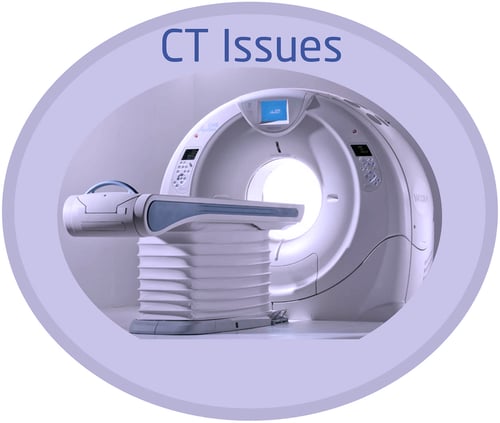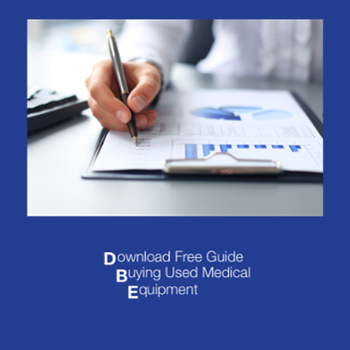CT Scanners are the workhorse of many medical imaging facilities. But, after thousands of scans, problems can crop up. Oftentimes it requires a visit by an imaging engineer. The experts at Atlantis Worldwide put together this list of five common issues with CT Scanners and what you can do about them.
problems can crop up. Oftentimes it requires a visit by an imaging engineer. The experts at Atlantis Worldwide put together this list of five common issues with CT Scanners and what you can do about them.
- Calibration Issues: You want to make sure your CT Scanner is working properly and providing accurate scan results. That’s why it’s important to make sure your CT Scanner is calibrated correctly. To find out if the calibration is correct, you’ll want to scan an object with a phantom with known radiodensity. This provides important information to determine whether the measurements show the proper number of Hounsfield Units or HUs. You can do this automatically or manually, depending upon which calibration tool was included when you purchased your CT Scanner. If you don’t have a calibration tool, you’ll have to buy one separately.
- X-Ray Tube Failure: When an X-ray tube malfunctions or fails you end up with poor image quality or no images at all. Factors that can contribute to tube failure include age, wear and tear and improper maintenance. Usually there’s an issue in the vacuum seal within the tube or the tube has been damaged. If you’re experiencing a tube failure, it’s important to turn off the X-ray beam quickly in order to ensure the safety of the healthcare providers and patient. You’ll need to contact an engineer and reschedule the patient’s appointment.
- Cloudy filters and sensors: Your machine can be affected by ambient humidity and temperature because water vapor can condense on the lenses and sensors of your CT Scanner. To avoid these kinds of issues keep your machine at 72° F or 22° C. If you happen to live in a very dry climate, make sure your imaging machine is located out of direct sunlight. Other culprits that can make your machine malfunction can be dust particles and other contaminants inside the air filter system. Be sure to change out the CT Scanner’s filters every three months and clean them with compressed air and soap-based cleaners on a regular basis. It’s important not to clean filters with alcohol. It’s also wise to use HEPA filters for all rooms that are adjacent to the room used for scanning. These HEPA filters can capture dust particles before they are exposed to the sensitive components in a CT Scanner.
- Power Surges: A power surge can damage your CT Scanner and other medical imaging devices. You should always use a surge protector that’s UL-tested and approved. You should always make sure electrical equipment in your radiology suite is plugged into an outlet with a ground fault circuit interrupter (GFCI) installed. It’s also a good idea to buy specialty outlets with built-in receptacles for plugs without cords to eliminate tripping hazards and improve overall safety.
- Lots of Image Noise: Some CT Scanners have multiple detectors to take images from different angles around a patient’s body. Each one records only part of the image. These images are all combined later during processing, which produces better quality results than a single-detector scanner. However, they also produce more images with noise. If you experience noise in your images, try to increase the radiation does in order to improve a CT scan’s contrast resolution. This can reduce image noise and provide an image that is clearer and more detailed. You must, however, balance between the radiation noise and the required contrast resolution when you determine the settings for the exam. If you increase the radiation dose, it could come at a cost.
Talk To An Expert
Do you have questions about your CT Scanner? Are you in the market for a refurbished CT Scanner for your facility? Talk to the experts at Atlantis Worldwide. We’ve been helping medical facilities find ideal solutions for their medical imaging needs for more than 30 years and would love to help you.
Some blogs you may have missed:
- Comparing Air Cooled & Water Cooled CT Scanners
- CT Scanner Artifacts- How Do I Correct Streaks?
- The Lowdown on CT & X-Ray Replacement Tubes
- The Difference Between a CT Scanner & a CT Simulator
- Gemstone Spectral Imaging 101
- Free CT Resources
About the author: Vikki Harmonay



